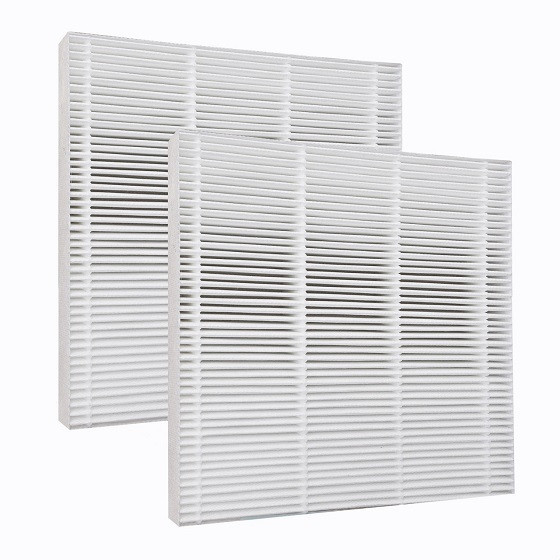views
Clean air is a basic human need, yet it’s often compromised indoors where we spend up to 90% of our time. Air pollutants, allergens, pet dander, mold spores, and volatile organic compounds (VOCs) build up inside homes and workplaces, affecting both health and comfort. This is where air purification technologies like Fresh Air Surround enter the picture, aiming to recreate the feeling of being in a natural, clean-air environment without actually stepping outside.
This article explores how technologies like this work, who benefits from them most, and how they're shaping the future of indoor air solutions.
The Indoor Air Quality Dilemma
Unlike visible messes, indoor air pollution is silent and mostly invisible. It’s easy to ignore—until it becomes a health issue. The EPA ranks indoor air pollution among the top five environmental risks to public health. Sources range from everyday household products to building materials, synthetic fragrances, and even electronics that emit ozone or VOCs.
Symptoms caused by poor indoor air include:
- Frequent headaches
- Fatigue
- Irritated eyes, nose, or throat
- Respiratory issues like asthma flare-ups
Children, elderly people, and those with pre-existing health conditions are especially vulnerable. Tackling indoor air quality has become less of a luxury and more of a necessity—especially post-pandemic when home air quality became part of the health conversation.
What Is “Fresh Air Surround” and How Does It Work?
The term Fresh Air Surround typically refers to multi-layered air cleaning technologies that attempt to mimic the freshness of outdoor air. These systems usually combine several purification mechanisms in one compact unit, such as:
- HEPA Filtration – Removes 99.97% of airborne particles down to 0.3 microns
- Activated Carbon Filters – Absorb odors, gases, and chemical vapors
- UV Light Sterilization – Neutralizes airborne bacteria and viruses
- Ionization – Releases negative ions to bind with pollutants, causing them to fall out of the breathable air stream
This layered approach means pollutants are not just filtered out—they're often deactivated or removed completely, which is different from simpler systems like basic HEPA filters alone.
Real-World Applications and Benefits
Homeowners use these systems to manage allergies, reduce pet odors, or even sleep better.
Office managers deploy them to cut down on sickness and improve employee productivity.
Medical facilities leverage advanced systems to prevent the spread of airborne diseases.
One of the key benefits of Fresh Air-style technology is coverage area. Many systems can clean the air in large rooms or entire floor levels. Some include smart sensors that auto-adjust based on the current air quality—no manual switching needed.
There’s also an energy-efficiency edge. Since many units don't require heavy HVAC modifications, they run independently and can supplement existing ventilation systems without increasing energy loads.
Misconceptions About Air Purifiers
There’s a lot of noise in the air purifier market, and it’s not all clean. Some users assume all purifiers are essentially the same, but the range in quality and performance is huge. Others worry that ionizers produce harmful ozone—which used to be true in early models, but not so much today when built-in ozone control is common.
Another myth is that air purifiers are only needed in cities. But rural homes can suffer from poor indoor air due to pollen, wildfire smoke, and indoor pollutants like wood smoke from stoves.
What matters most is understanding your air quality baseline and matching the technology to your needs. This is where units marketed under the Fresh Air Surround concept tend to offer flexibility, scalability, and multi-threat protection.
Choosing the Right Unit: What to Look For
When evaluating options, consider the following criteria:
- CADR (Clean Air Delivery Rate): Higher is better for large spaces
- Noise Level: Especially important for bedrooms or shared workspaces
- Maintenance: Some units have washable filters; others need frequent replacements
- Certifications: Look for AHAM, CARB, or Energy Star ratings
- Smart Features: Auto-sensing, app controls, and timers add convenience
Don’t get sucked into marketing gimmicks about “miracle air” or magic filters. Instead, opt for tested, proven mechanisms and transparent performance metrics.
Environmental Impact and Sustainability
Today’s consumer is not just health-conscious but eco-conscious too. The materials and energy efficiency of air purifiers are under more scrutiny than ever. Good systems balance air quality benefits without increasing landfill waste (e.g., filterless designs or recyclable filter media) or power usage.
Some advanced Fresh Air units are designed with sustainable parts and use energy-efficient motors that align with green building standards. That means cleaner air doesn't have to come at the cost of a bigger carbon footprint.
Integration with Smart Homes
Another future-forward trend is how air purification is becoming part of the connected home. Imagine an air purifier that syncs with your thermostat, humidifier, or even weather alerts. Some systems already do this—adjusting automatically during allergy seasons or high-smog days.
Integration can go even deeper: some smart purifiers now work with voice assistants like Alexa or Google Assistant, enabling real-time air quality updates and hands-free control.
As smart homes become mainstream, Fresh Air-style systems are evolving from stand-alone gadgets to central elements of environmental automation.
The concept of Fresh Air Surround isn’t just about air purifiers—it’s about designing spaces where health and technology meet. Whether it’s a parent managing their child’s asthma or a remote worker trying to focus better at home, clean air plays a huge role in physical and mental well-being.
This isn’t a passing health fad. It’s part of a broader shift toward proactive living and designing healthier indoor environments. And while the science and technology behind it continue to evolve, the goal stays simple: help people breathe better, live better.
At the end of the day, clean air should be a given, not a luxury.
For readers exploring indoor air quality options, many of the technologies mentioned above are developed or integrated by EcoTechWorld Inc., a company involved in environmental wellness solutions.























Comments
0 comment